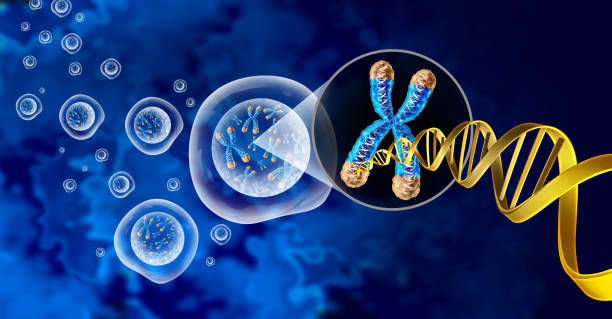Table of Contents
ToggleDefined as an eating pattern that cycles between periods of fasting and eating, intermittent fasting is not just another fad diet but a lifestyle approach that dates back centuries.
Understanding its definition, exploring its historical roots, and recognizing its importance in weight management and cellular rejuvenation can provide valuable insights into the benefits of this practice.

Definition of Intermittent Fasting
Intermittent fasting involves alternating between periods of eating and periods of abstinence from food. Unlike traditional diets that focus on what to eat, intermittent fasting places emphasis on when to eat.
Commonly followed patterns include the 16/8 method, which restricts daily eating to an eight-hour window, or alternate-day fasting where individuals consume little to no calories every other day.
By extending the overnight fast beyond typical breakfast hours, intermittent fasters extend their body’s natural fat-burning state while harnessing various physiological benefits.
Brief History and Origins of Intermittent Fasting
The concept of intermittent fasting has existed for centuries across different cultures and religious practices.
It is integral to many spiritual traditions such as Islam’s Ramadan, where Muslims fast from sunrise to sunset during the holy month.
Ancient Greek physician Hippocrates once said, “Instead of using medicine, fast a day,” acknowledging early on the potential health benefits associated with abstaining from food temporarily.
In more contemporary terms, intermittent fasting gained scientific attention in the early 20th century when researchers began exploring its effects on human health.

Importance of Weight Loss and Cellular Renewal
Obesity rates have surged in recent years, contributing to a myriad of metabolic disorders and chronic illnesses.
Intermittent fasting presents itself as an attractive option for those seeking sustainable weight loss.
By limiting the eating window or practicing longer fasting periods, individuals can achieve caloric restriction without feeling deprived or restricted by conventional diets.
Beyond weight management, intermittent fasting plays a vital role in promoting cellular renewal.
Our bodies have an innate ability to repair, regenerate, and rejuvenate cells through processes like autophagy and telomere maintenance.
Intermittent fasting triggers these mechanisms by clearing out damaged cellular components, promoting longevity, and reducing the risk of age-related diseases.

Understanding Intermittent Fasting
Types of Intermittent Fasting: Unlocking the Secrets to Weight Loss
One of the most popular methods is the 16/8 fasting protocol, where individuals fast for 16 hours and restrict their eating window to 8 hours each day.
This approach allows for consistent periods of fasting and promotes fat burning during these extended durations.
Another frequently practiced method is the 5:2 intermittent fasting strategy. In this approach, individuals consume a normal number of calories for five days each week and limit their intake to around 500-600 calories on two non-consecutive days.
This method provides a balance between calorie restriction and nourishment, promoting weight loss while still allowing for regular eating patterns.
Alternate-day fasting has gained traction in recent years.
As its name suggests, individuals alternate between fasting days, where they drastically reduce their caloric intake or consume no food at all, and feeding days when they eat normally.
This approach challenges the body’s metabolism by intermittently subjecting it to periods of intense caloric restriction.

Metabolic Shifts in Intermittent Fasting
Intermittent fasting exerts profound effects on our body’s metabolism, providing a key mechanism behind its weight loss benefits.
During periods of fasting-induced calorie restriction, insulin levels decrease significantly.
With lower insulin levels in circulation, fat cells release stored fatty acids into the bloodstream to be utilized as an energy source by other tissues in the body. This facilitates fat burning and assists in shedding excess weight.
Growth hormone levels increase during fasting periods, contributing to the preservation of muscle mass even when significant weight loss is achieved.
This hormonal response is crucial in maintaining a lean and toned physique while shedding unwanted pounds.
Benefits of Intermittent Fasting for Weight Loss
Caloric Restriction and Fat-Burning
One of the primary benefits of intermittent fasting is its ability to promote weight loss through caloric restriction and a heightened fat-burning mechanism.
When practicing intermittent fasting, individuals limit their eating window, which naturally reduces overall calorie intake.
This caloric deficit forces the body to seek alternative energy sources, leading to the breakdown of stored fat for fuel.
Intermittent fasting triggers a metabolic shift in the body that favors fat oxidation over glucose utilization. During periods of fasting, insulin levels decrease while glucagon levels rise.

Cellular Cleanup: Activating Autophagy
Intermittent fasting also activates a process called autophagy, which plays a crucial role in cellular cleanup and renewal.
Autophagy is a tightly regulated process that allows cells to recycle damaged or dysfunctional components by breaking them down and reusing their constituents.
This intracellular housekeeping process ensures the efficient removal of waste material and promotes cellular health.
By activating autophagy through intermittent fasting practices, individuals can enhance their cellular renewal capabilities and reduce the accumulation of harmful substances within cells.
Maximizing Muscle Preservation with Growth Hormone Boost
Intermittent fasting has been shown to stimulate the production of growth hormone (GH), a crucial factor in muscle preservation and growth.
GH is responsible for stimulating protein synthesis, promoting muscle recovery, and maintaining lean body mass.
During the fasting state, the body undergoes hormonal adaptations to conserve energy and ensure survival.
The increased secretion of GH during intermittent fasting helps preserve muscle mass by mobilizing fatty acids for energy while sparing protein breakdown. This preservation of lean body mass is essential for maintaining a healthy metabolism and contributing to overall weight loss.
Managing Inflammation and Oxidative Stress
Intermittent fasting has been found to reduce both inflammation and oxidative stress markers within the body.
By limiting calorie intake during intermittent fasting, individuals decrease their exposure to pro-inflammatory dietary components while simultaneously activating cellular repair mechanisms.
Studies have shown that intermittent fasting enhances antioxidant defense systems by increasing the activity of enzymes involved in scavenging free radicals.
Reducing inflammation not only promotes overall health but also aids in weight loss efforts.
Chronic low-grade inflammation disrupts metabolic processes, impairs insulin sensitivity, and contributes to fat accumulation—especially around the abdomen area known as stubborn belly fat.

Insulin Levels and Resistance Impact
Insulin plays a crucial role in regulating blood sugar levels by facilitating glucose uptake into cells for energy production or storage as glycogen or fat when there is an excess of calories consumed.
Excessive calorie intake can cause prolonged high insulin levels, leading to insulin resistance. This condition is linked to obesity, type 2 diabetes, and metabolic disorders.
Intermittent fasting can help regulate insulin levels and improve insulin sensitivity by reducing overall calorie intake, promoting weight loss, and enhancing glucose metabolism.
By allowing the body to rest from constant food consumption, intermittent fasting breaks the cycle of continuous insulin secretion and provides periods for insulin levels to lower.
Intermittent fasting enhances energy use from stored glycogen and fat, curbing blood sugar swings and limiting insulin overproduction.

Chronic Disease Reduction: Diabetes, Heart Disease, Cancer
Diabetes:
- Intermittent fasting improves insulin sensitivity, helping cells respond more effectively to insulin and regulate blood sugar levels. Intermittent fasting aids weight loss by limiting calories, easing insulin strain, and improving glucose control. It lowers inflammation and oxidative stress, potentially lessening type 2 diabetes risk.
Heart Disease:
- By promoting weight loss and favorable body composition, intermittent fasting can reduce risk factors like obesity, which are linked to heart disease. Enhanced lipid profiles show higher HDL and lower LDL, aiding heart health. Lower blood pressure, improved endothelial function, and reduced inflammation lower heart disease risk.
Cancer:
- Intermittent fasting regulates cellular processes, promotes autophagy, and helps remove damaged cells, preventing cancer-causing substance buildup. The reduction of oxidative stress helps maintain the integrity of cellular DNA. By improving immune function, intermittent fasting may contribute to the body’s ability to detect and eliminate abnormal cells, potentially reducing the risk of certain types of cancer.
Cellular Renewal: The Science Behind It
Autophagy: Body’s Self-Cleaning Mechanism
Derived from the Greek words meaning “self-eating,” autophagy is a highly regulated process by which cells degrade and recycle their own components.
During periods of fasting or caloric restriction, autophagy is upregulated as an adaptive response to conserve energy and promote survival.
Autophagy involves the formation of specialized structures called autophagosomes, which engulf portions of the cytoplasm, including damaged proteins and organelles.
These autophagosomes then fuse with lysosomes, forming autolysosomes where degradation occurs.
Telomeres: DNA’s Shield Against Aging
Located at the ends of chromosomes, telomeres consist of repetitive DNA sequences that function as protective caps for our genetic material.
Each time a cell divides, telomeres naturally shorten due to incomplete replication at their ends. Eventually, when telomeres become critically shorted, cell division becomes impaired or ceases altogether.
Intermittent fasting has shown promise in preserving telomere length by enhancing DNA repair mechanisms through increased expression of certain proteins involved in maintaining chromosome integrity.
This preservation of telomeres contributes to extended cellular lifespan and improved overall healthspan.

Intermittent Fasting: Popular Protocols
One of the most popular and widely adopted methods of intermittent fasting is the “16/8” or Time-Restricted Eating (TRE).
This approach involves restricting your daily eating window to only 8 hours while fasting for the remaining 16 hours.
Typically, individuals choose to skip breakfast and start their eating window around noon, having their last meal at around 8 p.m. This protocol aligns well with our natural circadian rhythms and allows for a longer overnight fast.
The benefits of this method lie not only in its simplicity but also in its effectiveness for weight loss.
By limiting your eating window, you naturally reduce your overall caloric intake, leading to a calorie deficit necessary for shedding those extra pounds.
This approach has been shown to specifically target stubborn belly fat due to its impact on insulin levels and increased fat oxidation during the fasting period.
Advanced Protocols: Alternate-Day & 5:2 Fasting
For those seeking more advanced intermittent fasting protocols, alternate-day fasting (ADF) or the 5:2 diet may be worth considering.
ADF involves alternating between days of regular eating and complete or partial fasting days.
On fasting days, caloric intake is significantly reduced (usually around 500-600 calories), while regular eating days allow for unrestricted food consumption.
The 5:2 diet takes a similar approach but focuses on two non-consecutive days per week where caloric intake is restricted, while the remaining five days follow normal eating habits.
Both of these protocols have shown promising results in weight loss and overall health improvement.
They provide a greater level of flexibility, allowing individuals to choose which days work best for their fasting periods.
Myths About Intermittent Fasting:
Intermittent fasting leads to muscle loss
Contrary to popular belief, when done correctly, intermittent fasting does not result in significant muscle wasting.
In fact, research suggests that intermittent fasting can actually help preserve lean muscle mass by stimulating the production of growth hormones and promoting fat oxidation while protecting protein synthesis.
Incorporating resistance training into your routine during the feeding window can further support muscle retention and development.
So, rest assured that intermittent fasting is compatible with maintaining a healthy and toned physique.

Skipping breakfast is Detrimental to Health
It has long been ingrained in our minds that breakfast is the most important meal of the day. However, recent scientific evidence challenges this notion.
Contrary to popular belief, skipping breakfast as part of an intermittent fasting regimen does not have adverse effects on health or metabolism.
In fact, it can be an effective strategy for weight management and overall well-being.
Research has shown that skipping breakfast does not lead to overeating later in the day nor negatively affects metabolic rate or nutrient intake.
Conclusion
Intermittent fasting has gained significant attention for its potential benefits in weight management and cellular renewal.
Caloric restriction and metabolic adaptations contribute to its potential for a healthier lifestyle. It also activates fat-burning through autophagy and reduces inflammation and oxidative stress.
While misconceptions around muscle loss and skipping breakfast persist within discussions about intermittent fasting, current scientific evidence refutes these claims.
With guidance and intermittent fasting, many have lost belly fat and boosted their health.









